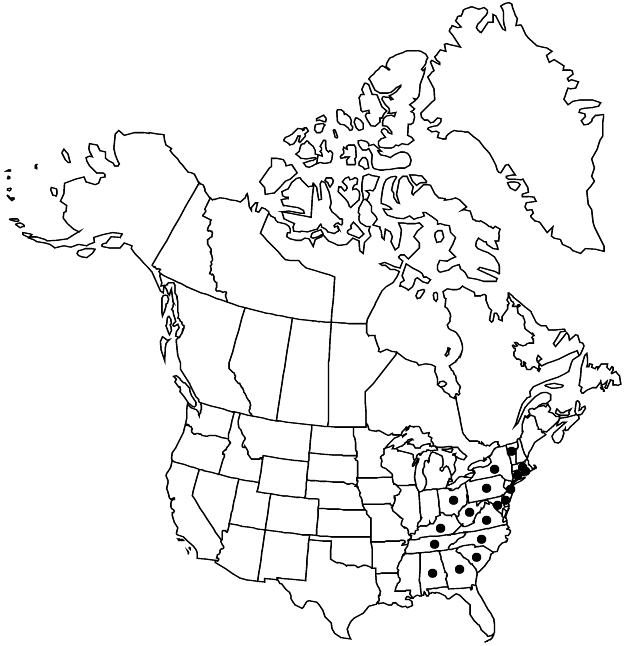Rhododendron periclymenoides
Castanea 27: 95. 1962 ,.
Shrubs, to 3(–5) m, usually not rhizomatous. Stems: bark smooth to vertically furrowed, shredding; twigs scattered, multicellular eglandular-hairy (hairs unbranched) or such hairs ± absent, otherwise glabrous or sparsely unicellular-hairy. Leaves deciduous; petiole multicellular eglandular-hairy and unicellular-hairy; blade ovate to obovate, 3–9(–12.5) × 1.4–3.8(–5) cm, thin, membranous, margins entire, plane, ciliate, eglandular-hairy, often strikingly so, apex acute to obtuse, often mucronate, abaxial surface often glabrous or, sometimes, sparsely unicellular-hairy, sometimes sparsely eglandular-hairy, adaxial surface sometimes scattered eglandular-hairy, otherwise glabrous or, sometimes, sparsely unicellular-hairy. Floral bud scales usually glabrous abaxially, margins unicellular-ciliate. Inflorescences 6–15-flowered; bracts similar to bud scales. Pedicels 4–19 mm, eglandular-hairy, otherwise glabrous or sparsely unicellular-hairy. Flowers opening before or with leaves, erect to horizontal, slightly fragrant; calyx lobes 0.5–2.5(–4) mm, surfaces and margins scattered, eglandular- and/or, rarely, stipitate-glandular-hairy, otherwise glabrous or moderately unicellular-hairy; corolla deep pink to white with pink tube, without blotch on upper lobe, funnelform, 23–45 mm, scattered, multicellular eglandular-hairy and/or, less commonly, multicellular stipitate-glandular-hairy (hairs not forming distinct lines), otherwise sparsely to moderately unicellular-hairy on outer surface, petals connate, lobes 9–25 mm, tube usually gradually expanded into lobes, 12–27 mm (equaling or longer than lobes); stamens 5, much exserted, ± unequal, 32–68 mm. Capsules borne on erect pedicels, 10–30 × 3–6.5 mm, eglandular-hairy, otherwise glabrous or sparsely unicellular-hairy. Seeds without distinct tails; testa rather close, but ± loose. 2n = 26.
Phenology: Flowering spring.
Habitat: Mixed, dry to moist woods, often along streams, thickets, swamps
Elevation: 0-1000 m
Distribution

Ala., Conn., Del., Ga., Ky., Md., Mass., N.J., N.Y., N.C., Ohio, Pa., R.I., S.C., Tenn., Vt., Va., W.Va.
Discussion
Rhododendron periclymenoides is most similar to R. canescens, from which it can be distinguished by its less hairy leaves and bud scales, more gradually expanded corolla tube, and usually eglandular corolla indumentum; plants with stipitate-glandular hairs on the corolla occur sporadically throughout the range of this species (K. A. Kron 1993). Occasional hybridization with R. atlanticum, R. canescens, and R. prinophyllum probably occurs. The name R. nudiflorum Torrey has been incorrectly applied to this species; that name was superfluous when published and applies to R. luteum.
Selected References
None.